The American PlateA History of the United States in 100 Bites
Did you know that the first graham crackers were designed to reduce sexual desire? Or that Americans have tried fad diets for almost two hundred years? From the chief historian at HISTORY® comes a rich chronicle of the evolution of American cuisine and culture, from before Columbus’s arrival to today.
Did you know that the first graham crackers were designed to reduce sexual desire? Or that Americans have tried fad diets for almost two hundred years? Why do we say things like “buck” for a dollar and “living high on the hog”? How have economics, technology, and social movements changed our tastes? Uncover these and other fascinating aspects of American food traditions in The American Plate. Dr. Libby H. O’Connell takes readers on a mouth-watering journey through America’s culinary evolution into the vibrant array of foods we savor today. In 100 tantalizing bites, ranging from blueberries and bagels to peanut butter, hard cider, and Cracker Jack, O’Connell reveals the astonishing ways that cultures and individuals have shaped our national diet and continue to influence how we cook and eat. Peppered throughout with recipes, photos, and tidbits on dozens of foods, from the surprising origins of Hershey Bars to the strange delicacies our ancestors enjoyed, such as roast turtle and grilled beaver tail. Inspiring and intensely satisfying, The American Plate shows how we can use the tastes of our shared past to transform our future.
Award wining writer and historian Libby O’Connell has long been interested in America’s connection with it’s culinary roots. She documented her findings in The American Plate: A History of the United States in 100 Bites (One of our picks for out best of 2014 list.). Naturally we had a bunch of questions about her book which she was she was kind enough to answer.
BAF: Where did the inspiration to undertake such a project come from?
Libby O’Connell: I was in college and I took some time off and worked at Plymouth Plantation in historic costume as an interpreter. I did a lot of cooking around an open hearth. I noticed that as the visitors would come and go, they really were interested in stories about food because it was something that they had experience with in their everyday lives and they could connect to it.
BAF: How did you come up with the selection of these ‘100 bites’?
Libby O’Connell: This was an interesting problem because there are lots of foods that may be iconic in American History like grits, for example, that don’t have their own section. I wanted to tell the story of America chronologically, so I used different foods and some beverages that I think tell that story the best. I did leave things out and I’m okay with that. I’d love to hear from anybody who has hey, why didn’t you include such and such a stew? We’ve been making this for generations in our part of Ohio.
The truth is I needed the structure of 100 foods to get through the book. It helped me as much as it helps the reader to understand the organization.
BAF: Certainly one of the interesting things about your selections, it wasn’t all straight forward X, Y, Z. For example Eleanor Roosevelt’s scrambled eggs…
Libby O’Connell: Yeah. That’s a wonderful story and I can just imagine her standing there, “Oh, would you like some scrambled eggs? It’s cook’s night off. Let’s talk about civil rights…”
BAF: These stories are representative of a time or an issue or something going on, representative of a bigger picture.
Libby O’Connell: Thank you. That was my hope. For example I chose Southern Fried Catfish when I was talking about the American South during the Civil War because there was so little food and the farming environment had just been destroyed, not only the infrastructure of the barns and the fencing, but also pastureland and things had been burnt and the livestock had been driven out.
I’m not sympathetic to the South in many ways, during the Civil War. I’m not saying go stars and bars but there was a huge dearth of food and people were really hungry. The very simple meal that I describe in the section on catfish I think is telling about what was available. I wandered down strange roads when I was doing the research. I think that’s true of all history. You start getting into the documents on things and you find out very vivid anecdotes that bring you into the past.
I start with my thesis that the past is a different country and it has flavors of it’s own. When you write about the American South during the Civil War, you realize not only the South is a different country and it has flavors of it’s own, but war time has flavors of its own and they’re very meager and bitter.
BAF: You mentioned how the majority of the food would come from the north.
Libby O’Connell: I’ve written a lot on the American Civil War. I’ve been very involved in research on it because of work that I’ve done through The History Channel. I never knew that until I was doing some research about food in the Civil War and this crazy Thanksgiving effort that was organized by the Union supporters in the northeast, particularly, actually New York, where they decided that all Union soldiers should get thanksgiving no matter where they were. People really delivered on that idea. Imagine every community today having bake sales for our soldiers. That’s what it was like. They delivered pies and turkey and hams and huge quantities of food and they would march it out. These civilians would gather and bring the food as close to the battle lines as they could, so that when the soldiers came back from the battle, they would have Thanksgiving dinner. They shipped it down to Savannah.
When Sherman’s Army reached Savannah, which was after Thanksgiving, it was in December, there was a Thanksgiving dinner waiting for them. It’s just amazing civilian support for the troops.
BAF: You’ve mentioned, also, the interesting part about the ovens that would be wheeled out from train cars or on mules out so the soldiers would have fresh bread.
Libby O’Connell: You probably know that the Capitol Building is on a hill and that’s one reason why you can see it from any part of Washington because it’s at one of the highest points. They built ovens into the terraces of that hill at first because they didn’t have anywhere else to build the ovens. They were built into the hillside of Capitol Hill.
Later, they figured out how to create these traveling ovens that made it possible not only to deliver bread, but to actually bake bread nearby. They couldn’t bring them right up to the front, but they could get it pretty close. That was the technology that Americans used in World War I and people have never seen anything like the foods that our soldiers had access to, assuming they’re in camp. If they’re on a march to some new part, they’re not getting all that nice hot food, but when they come back, it’s right there.
BAF: Do people realize the depth that the history of this country has been shaped by food and produce and farming and agriculture?
Libby O’Connell: The ability of our country to feed it’s own troops wherever they are is something that had not happened since the Roman times on this type of scale and now the cooking of the military’s kitchens isn’t something that people exclaim in joy over, but people don’t doubt the abundance.
BAF: And how things are shaped because of it.
Libby O’Connell: Actually, one thing that I found that was really interesting and this refers to Thanksgiving, there were a lot of farmers in locations like out in Nebraska … I was just meeting, talking to somebody around Omaha. That whole group is German and more from the western part of Poland, Lithuania. There are a lot of farmers from that area that came straight to the mid west, the foothills of the Rocky areas for farming and they weren’t inculcated in this New England tradition of Thanksgiving.
Their sons learn about Thanksgiving traditions from being in the war because the army provides them with those tin plates. It might not be right on Thanksgiving Day, but it’s going to be around there. They’re going to get turkey. They’re going to get stuffing. They’re going to get gravy. They’re going to get mashed potatoes or sweet potatoes and some sort of green vegetable, probably canned and cranberry sauce. They go home and they say, “Mom and Dad, this is what we’re supposed to have.”
It’s really interesting what happens when you have these young farm boys going off. They’re drafted and they come back with a whole new sense of American culture because they had been in these … They’re not totally isolated, but they’re pretty self-sufficient communities in terms of who they’re seeing and they learned about American traditions that way.
I don’t think a lot has been done in really digging into primary sources on the history of food, except for the one topic like cod. Mark Kurlansky has done some really good work on the history of food.
A lot of times, people are looking at menus and they’re looking at holiday feasts and things like that. This is a different way of looking at the history of food, which is really telling the story of America and using food as the lens.
BAF: One of the stories which I think people would enjoy just hearing about was Lincoln’s favorite cake.
Libby O’Connell: Isn’t that great. I love that story. I lived that story. I wrote the whole thing up about the white almond cake in the galleys, how everybody who was reviewing the book the first go round saw the galley coffee and there it is all about the white almond cake.
Okay, so then checking the footnotes. I couldn’t find that so I had to go back and dig in to get some other sources. There I found this pecan cake. I thought, “No, no, no. I wrote up white almond cake. What’s up with this pecan cake? Where’d that come from?”
Then I called a friend of mine who is a Lincoln expert, Harold Holzer, and said, “Hal, how do I interpret this?” He said, “Well, this is the story.” He gave me the story and it’s a great one. I love it. It says so much about Lincoln as a canny politician, not the great emancipator or the frontier woods rail splitter. Those are all icons that everyone is familiar with, but the guy at the dinner table ‘Ma’am this is my favorite cake.’ This really helps understand him better, don’t you think?
BAF: Absolutely. The consummate politician. Another intriguing story which I liked was the Navajo fry bread.
Libby O’Connell: I love that story. I was curious by that story because I hadn’t realized how modern Navajo fry bread is. I think there are a lot of Navajos, but also, Navajo fans out there, people who admire the culture and admire the artwork are surprised at something as traditional as Navajo fry bread isn’t developed until the late 19th century, around the time of the Civil War during one of their removals.
BAF: Was there anything that took you by surprise or did you have any major ah-hah moments or things that just threw your thinking askew?
Libby O’Connell: I’ll tell you one thing. I’ve mentioned a few of them, one of them being the Lincoln story and the Thanksgiving for the Civil War and stuff like that. One thing I thought was very … Tells a complex story is of the women suffragists developing the idea using cookbooks to raise money so that they could have political rights. We don’t think of feminism and cookbooks in the same breath today. We’re thinking today it’s okay because you can be a feminist in the kitchen, but traditionally, we think of women getting out of the kitchen to get equal rights, right?
They’re leaving the household, getting equal pay, having the right to vote, all of these things, but in fact, women took the skills that they had cooking and housekeeping as a way to make money so that they could leave those skills behind or have those skills be a choice rather than a requirement.
I was stunned. The first place to do this was Massachusetts. There was a Massachusetts suffragist book, cookbook. Of course, Massachusetts, you give them a liberal cause, right? That was the first and women could vote there long before they could vote in some of the other states outside of the western states where they wanted women to come, like Wyoming. They had women judges in Wyoming before a state like New York was allowing women to vote.
BAF: What’s next for you?
Libby O’Connell: I’m working on a film for The History Channel that will be at Independence Hall in the visitor’s center. It’s a new film that’s going to be shown. It’s not about food, it’s about the Declaration of Independence and the writing of the Constitution. I’m very excited about that. That’s been a very long-term project. I am working on educational material for something called the Sons of Liberty, which is going to be a new special we have coming up on The History Channel. I’m also going to be working on developing educational guidelines.
There are 2 things on my books. One is I’m working on menus for book clubs. You know how people have book clubs and they like to get together and eat about the book. I wanted to write up suggestions for my web site on if you have a book club, here are some menus. If you want to talk about the book, these foods could help inspire you. I’m not encouraging people to grill beaver tail for this. That could be a menu all of it’s own. Don’t let me stop you!
“O’Connell, chief historian for the History Channel and A&E Networks, has written a book rich in culinary history, sociology, and American culture…This title is not only educational but amusing. Recommended for public libraries” – Library Journal
“Like many miniencyclopedias, this one is studded with often intriguing facts…” – Kirkus
“The American Plate is an engagingly readable history of American food. It takes us from pemmican to microwave popcorn, from lunch pails to oysters Rockefeller. It’s one of those agreeable books that works just as well if you dive in at random or read every bite in sequence; either way, it is full of treats. Libby O’Connell imparts a great deal of information about changing American foodways with humor and pithiness. She considers such questions as how beavertail and eel – once popular American delicacies – didn’t pass the test of time, while maple syrup and blueberries are still enjoyed, just as they were by American Indians. Oh, and read on to find out the secret ingredient in Brunswick stew.” – Bee Wilson, author of Consider the Fork: A History of How we Cook and Eat
“The American Plate shows that food is interesting not just because it tastes good, but because it reflects the people who grow, cook, and eat it. Here are the compelling, colorful backstories of national bites as familiar as microwave popcorn and as obscure as pemmican, as enduring as Southern fried chicken and as of-the-moment as seaweed and acai – a buffet of information that revels in the incredible diversity of American cuisine.” – Michael Stern, co-author of the bestselling Roadfood series
“Libby O’Connell’s The American Plate presents one hundred well-researched stories on key foods from the obvious–corn, wheat, beef and turkeys– to the unexpected–soldier’s rations, Lincoln’s favorite cake, Eleanor Roosevelt’s scrambled eggs, and roasted turtles. Every page tells a surprising story about American culinary history. O’Connell’s easy-to-digest prose and modest portions are sprinkled with fascinating anecdotes that make these stories compulsively readable. This book is a wonderful delight.” – Andrew F. Smith, Editor in Chief, The Oxford Encyclopedia of Food and Drink in America
“From maize and barbeque to granola and salsa, Libby O’Connell illuminates the history of America’s palate with fun and engaging tales of how the nation became what it eats. Using anthropology, history, folklore and economics as her ingredients, she cooks up an intellectually delicious buffet sure to please a wide readership. Thoroughly researched, and based upon serious scholarship, this is a wonderful, informative and entertaining book.” – Richard Kurin, author of The Smithsonian’s History of America in 101 Objects


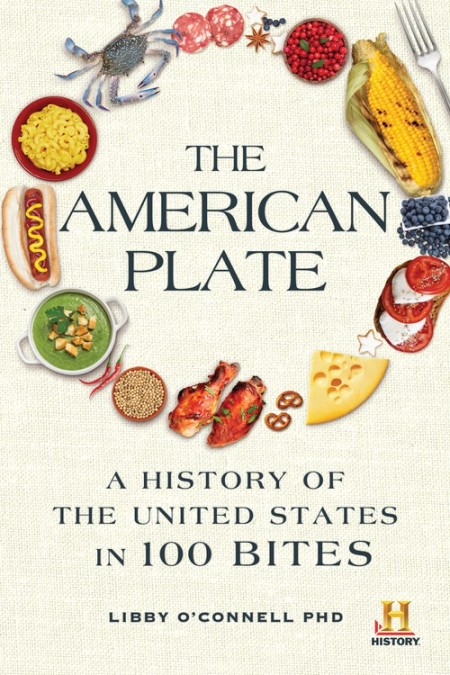


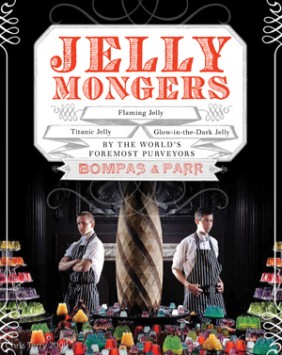
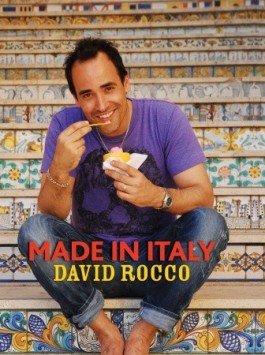
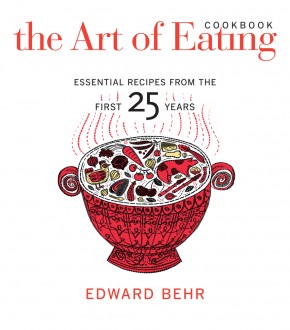
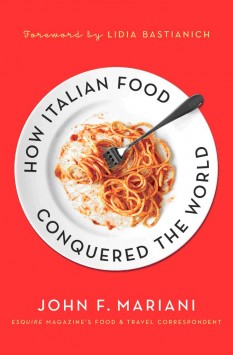
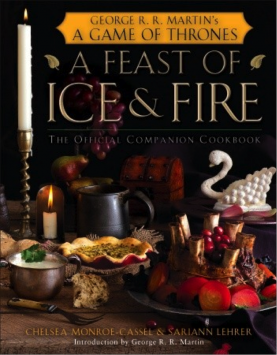
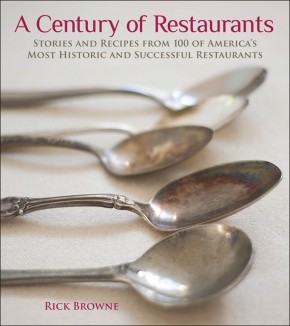
Leave a Reply